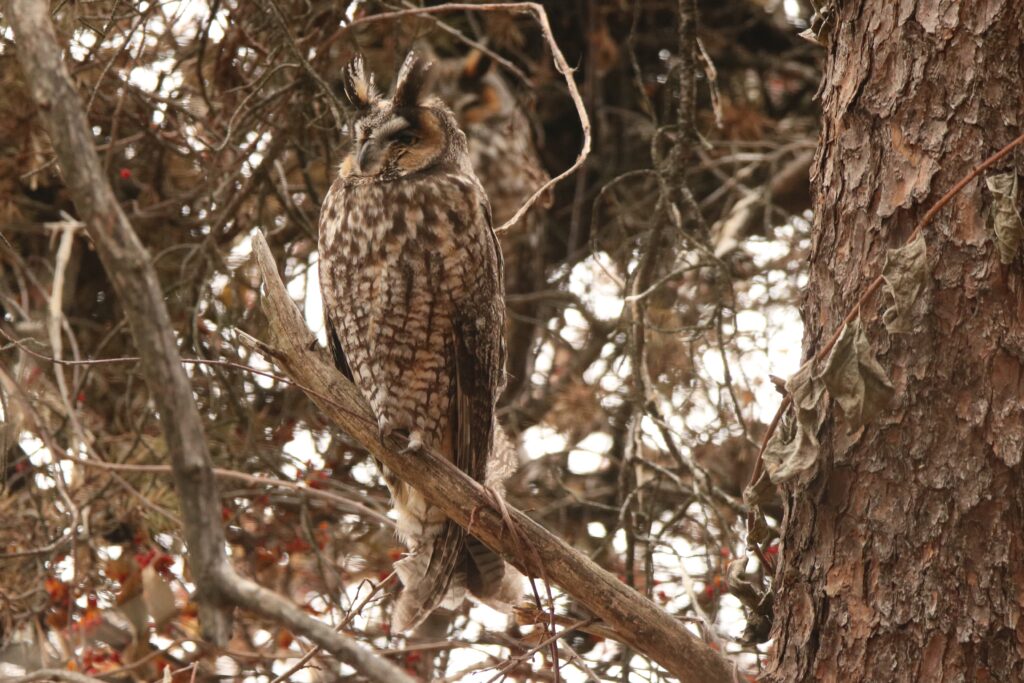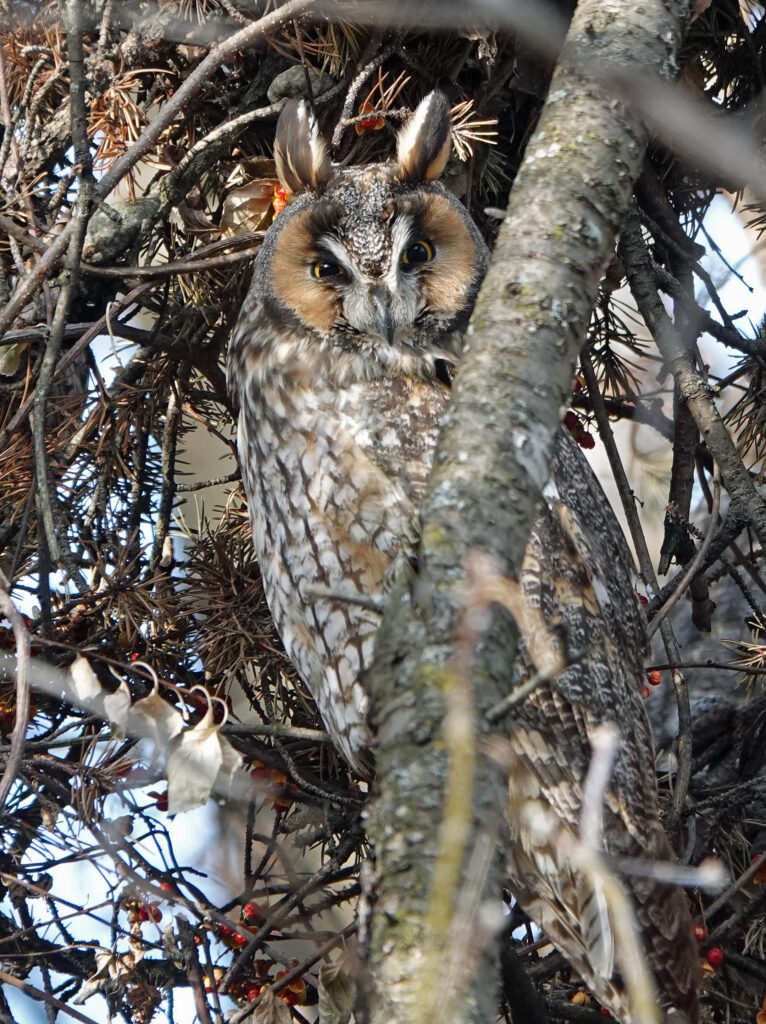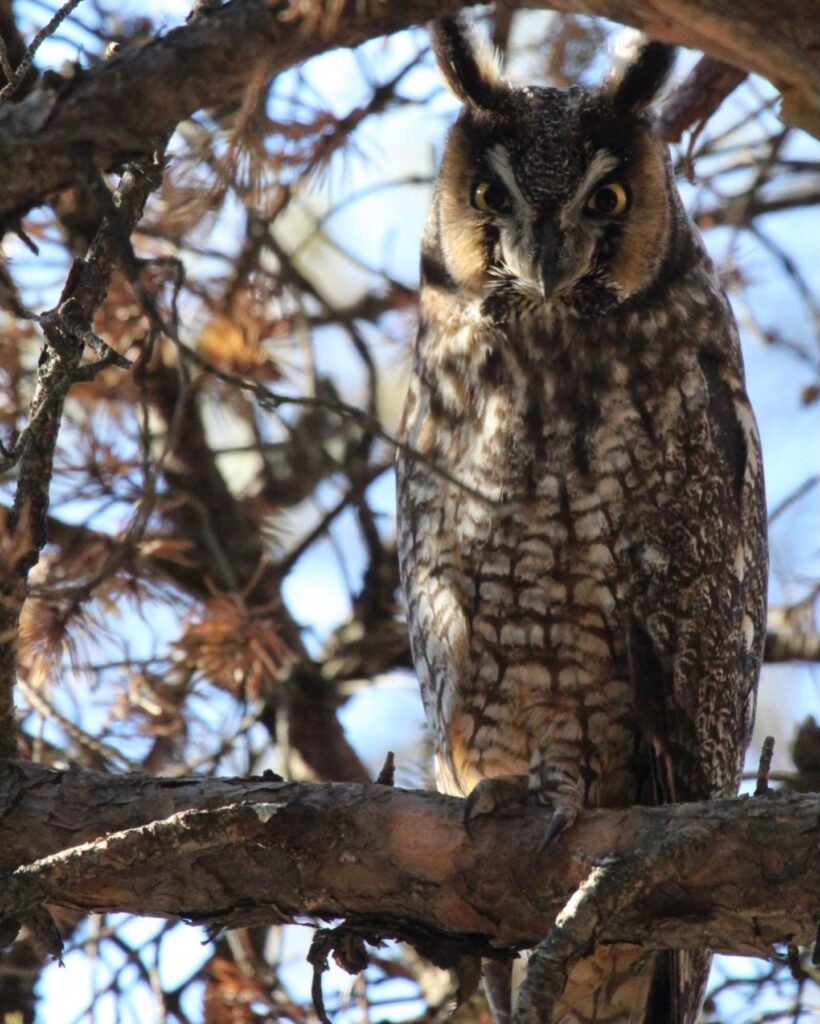To Owl or Not To Owl
Recently I shared some pics of Long-eared Owls I took, along with a pic by member Sgeiger86. More of our members have posted pictures of (I presume) the same owls. I’ll post those pictures below, but first some more about ethical practices regarding owl photography.
While driving to Des Moines to be a part of our son Kevin’s Ordination as an Evangelical Free Church Minister, Karen read to me an article about the Illinois Ornithological Society’s new prohibition about posting pictures of owls. In essence, they said that they will not publish any pictures of owls on their Facebook or home page sites because they cannot verify that the picture was taken in an ethical manner. “Ethical Manner?” I’ve discussed in previous posts about a photographer who purchased mice from a pet store and used them to lure a Snowy Owl in for pictures. That’s certainly on the extreme side of non-ethical bird photography. The Chicago Audubon Society posted a set of guidelines for ethical bird viewing and photography. You can read the whole article HERE. Below are some of their guidelines:
- Don’t get too close – if the owl looks at you frequently, you’re too close.
- Stay on “the sidelines” and don’t enter an open area where an owl is hunting.
- Use binoculars or a scope for viewing and a telephoto lens for photography.
- Use a blind to minimize your presence – your car or even just hide behind a tree.
- Do not intentionally “flush” an owl.
- If you use audio recordings, minimize their impact on birds, and follow the ABA Code of Birding Ethics.
- Use discretion when sharing the location of an owl; usually it’s best to provide details only to people you can trust to treat the owl safely.
- Do not feed owls anything such mice, which may cause them to get used to people and can also result in collisions with cars and buildings.
- Avoid the use of flash photography, especially after dark.
- Eliminate noise to avoid interfering with a bird’s auditory hunting – if you’re viewing from a car, turn off the engine; if you’re with others, talk in a whisper only when necessary.
Below are some pictures submitted of the Long-eared Owls by people I told where to look for them. I followed the seventh guideline above, and shared the location only with people I trust to treat the owls safely. Asteinmann found the owls and got this interesting shot of one in front of another. He shared with me that there were many birders and photographers there when he arrived so the “cat is out of the bag” about their location.
Linlark was there, too. She got this great shot of one of the owls:
Hmeade2108 said he stumbled across this owl recently. In his notation, the location he entered was: “Undisclosed Location (to protect the bird)” That’s the way to do it!
I won’t prohibit the posting of owl pics here because I trust our members will respect the owls they see and avoid disturbing them.
Stay Safe. Go Birding. Take Pics Ethically. Share Here. Repeat.
Mike
If you would like to learn more about GreatBirdPics.com Click Here. Members can post their own great bird pics, create an online gallery of their works, and receive regular emails about bird photography.



Those are great guidelines. I would also say that one should only stay in the location the absolute minimum amount of time, to reduce the crowd numbers at any given time and give others a chance to see them. Waiting there all day for “the perfect shot” seems excessive to me in a situation like this, especially when they were quite easily viewed and able to be photographed once you found them.